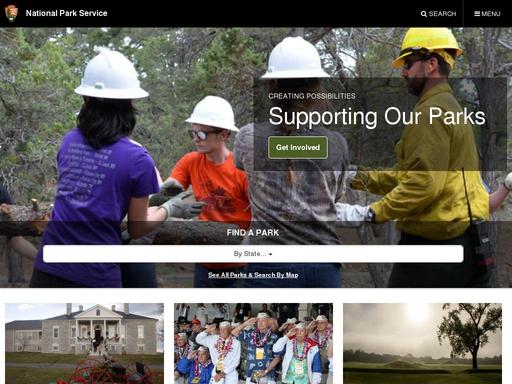Rate Tule Springs Fossil Beds
Learn and Explore
Since 1916, the National Park Service has been entrusted with the care of our national parks. With the help of volunteers and partners, we safeguard these special places and share their stories with more than 275 million visitors every year. But our work doesn’t stop there.
We are proud that tribes, local governments, nonprofit organizations, businesses, and individual citizens ask for our help in revitalizing their communities, preserving local history, celebrating local heritage, and creating close to home opportunities for kids and families to get outside, be active, and have fun.
Taking care of the national parks and helping Americans take care of their communities is a job we love, and we need—and welcome—your help and support.
Our Mission
The National Park Service preserves unimpaired the natural and cultural resources and values of the National Park System for the enjoyment, education, and inspiration of this and future generations. The Park Service cooperates with partners to extend the benefits of natural and cultural resource conservation and outdoor recreation throughout this country and the world.
Frequently Asked Questions
How do I obtain a park entrance pass?
Only 118 of your 417 park sites charge entrance fees. You can obtain park entrance passes by visiting a park site that charges an entrance fee. Entrance fee sites have passes available; we recommend calling a park prior to your visit. (See the park search to locate a specific park.) There are a number of entrance passes available, including park-specific passes as well as passes that offer entrance to more than 2,000 federal recreation sites in addition to the national parks (Annual, Military, Senior, 4th Grade, Access, and Volunteer passes). Learn more about the America the Beautiful – The National Parks and Federal Recreational Lands Pass.
About this location:
National Monument
Operating Hours & Seasons
Tule Springs Operating Hours
Tule Springs Fossil Beds National Monument is open during daylight hours. The park is closed at night.
Standard Hours
- Sunday: Sunrise – Sunset
- Monday: Sunrise – Sunset
- Tuesday: Sunrise – Sunset
- Wednesday: Sunrise – Sunset
- Thursday: Sunrise – Sunset
- Friday: Sunrise – Sunset
- Saturday: Sunrise – Sunset
Fees & Passes
Entrance Fees:
- $0.00 – Tule Springs Entrance Fees
No fees or passes are currently required to access Tule Springs Fossil Beds National Monument.
Entrance Passes:
- $0.00 – Passes
None
About
Explore the Ice Age
Mammoths, lions and camels once roamed along wetlands just north of what is now known as Las Vegas, Nevada. Their history is preserved at Tule Springs Fossil Beds National Monument and is ready to be discovered.
Directions
Because Tule Springs is a new park, there is no visitor center, facilities or parking areas. Right now to access the park, people can park on nearby public roads in the cities of Las Vegas and North Las Vegas, and they can enter the monument on foot. Federal regulations prohibit off-roading in the park. Vehicles are only permitted on approved roads and only when the vehicles are properly licensed for street use.
Weather
Refugees from states hit hard by winter’s icy clutch often flee to this area to spend a mild winter. Sunbathers spend summers here to toast in the 110 degree F plus temperatures. The area generally has less than five inches of annual rainfall. Water temperatures may range from 45 degrees F. to 85 degrees F. during winter and summer respectively.





